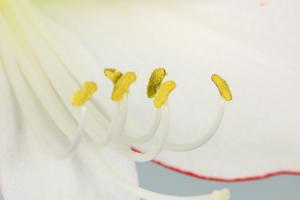A Picture of a Plant Cell with Labels
Introduction
A plant cell is the structural and functional unit of a plant. It is unique in structure and contains various organelles that perform different functions. This article presents a picture of a plant cell with labels to help understand how it functions.
The Cell Wall
The cell wall is a rigid outer layer that provides support and protection to the plant cell. It is made up of cellulose, hemicellulose, and pectin. The cell wall also plays a vital role in determining the shape and size of the plant.
The Cell Membrane
The cell membrane is a thin, flexible layer located just below the cell wall. It is made up of lipids and proteins and serves as a barrier, controlling the passage of molecules in and out of the cell.
The Nucleus
The nucleus is the control center of the plant cell, containing the genetic material or DNA necessary for cell replication and function. It is surrounded by a double-layered nuclear membrane that protects it from the cytoplasm.
The Chloroplasts
Chloroplasts are organelles that perform photosynthesis, converting light energy into chemical energy to produce food for the plant. These organelles contain chlorophyll, a green pigment that gives plants their characteristic color.
The Mitochondria
Mitochondria are organelles that produce energy for the plant cell. They perform cellular respiration, converting glucose into ATP, the energy currency of the cell.
The Endoplasmic Reticulum
The endoplasmic reticulum is a network of membranes that transport and synthesize proteins and lipids. It is divided into rough and smooth ER, depending on the presence or absence of ribosomes.
The Golgi Apparatus
The Golgi apparatus is a stack of membranes that modifies, sorts, and packages proteins and lipids for transport within or outside the cell.
The Vacuoles
Vacuoles are sacs filled with fluid and are the largest organelle in the plant cell. They serve as a storage center for water, minerals, and waste products.
Conclusion
In conclusion, a plant cell is a complex entity that contains various organelles that work together to maintain its structure and function. Understanding the components and functions of the plant cell can help in the development of new technologies to improve crop yield and plant growth. The picture of a plant cell with labels serves as a useful tool in exploring the inner workings of this amazing structure.

 how many times do yo...
how many times do yo... how many planted tre...
how many planted tre... how many pine trees ...
how many pine trees ... how many pecan trees...
how many pecan trees... how many plants comp...
how many plants comp... how many plants can ...
how many plants can ... how many plants and ...
how many plants and ... how many pepper plan...
how many pepper plan...































